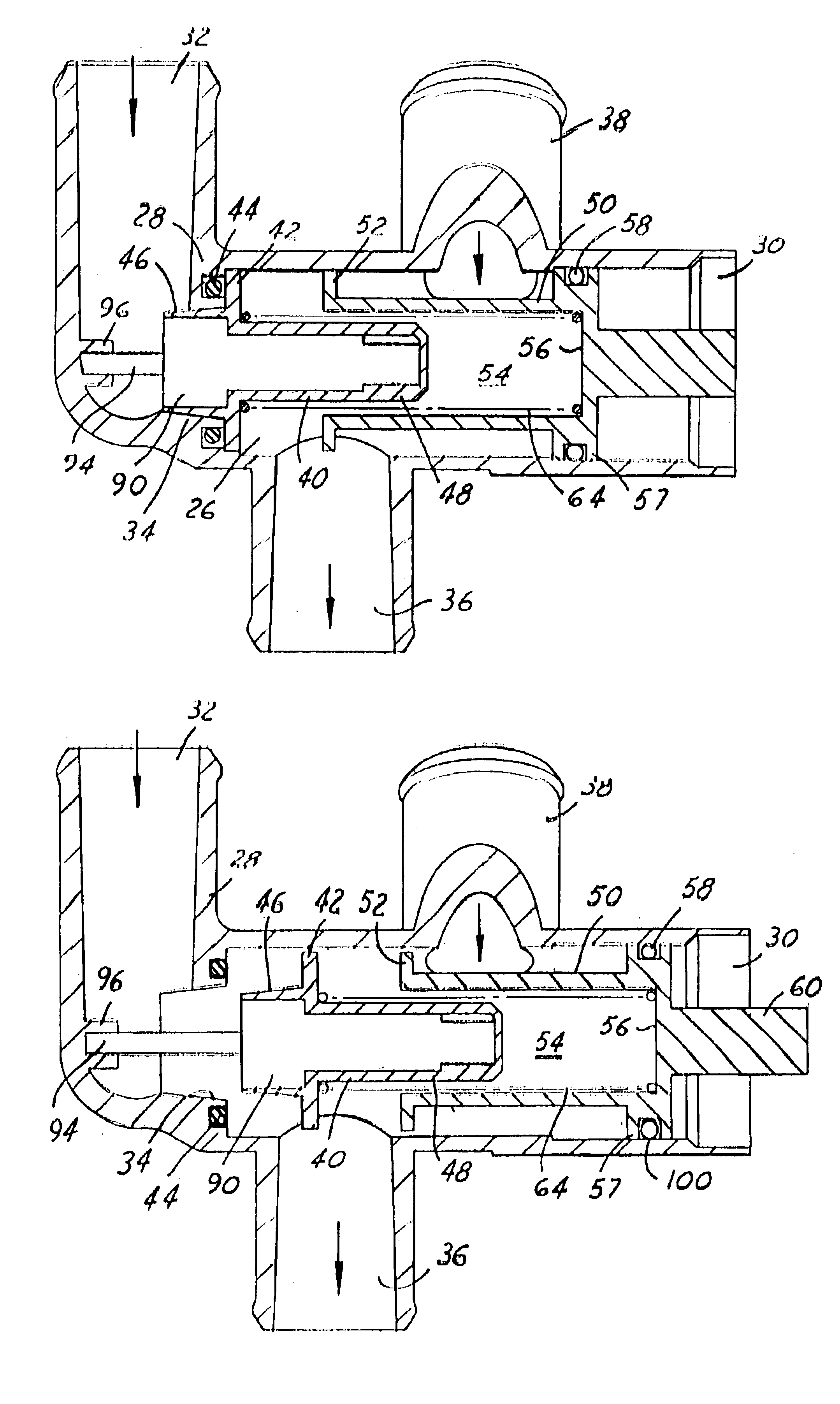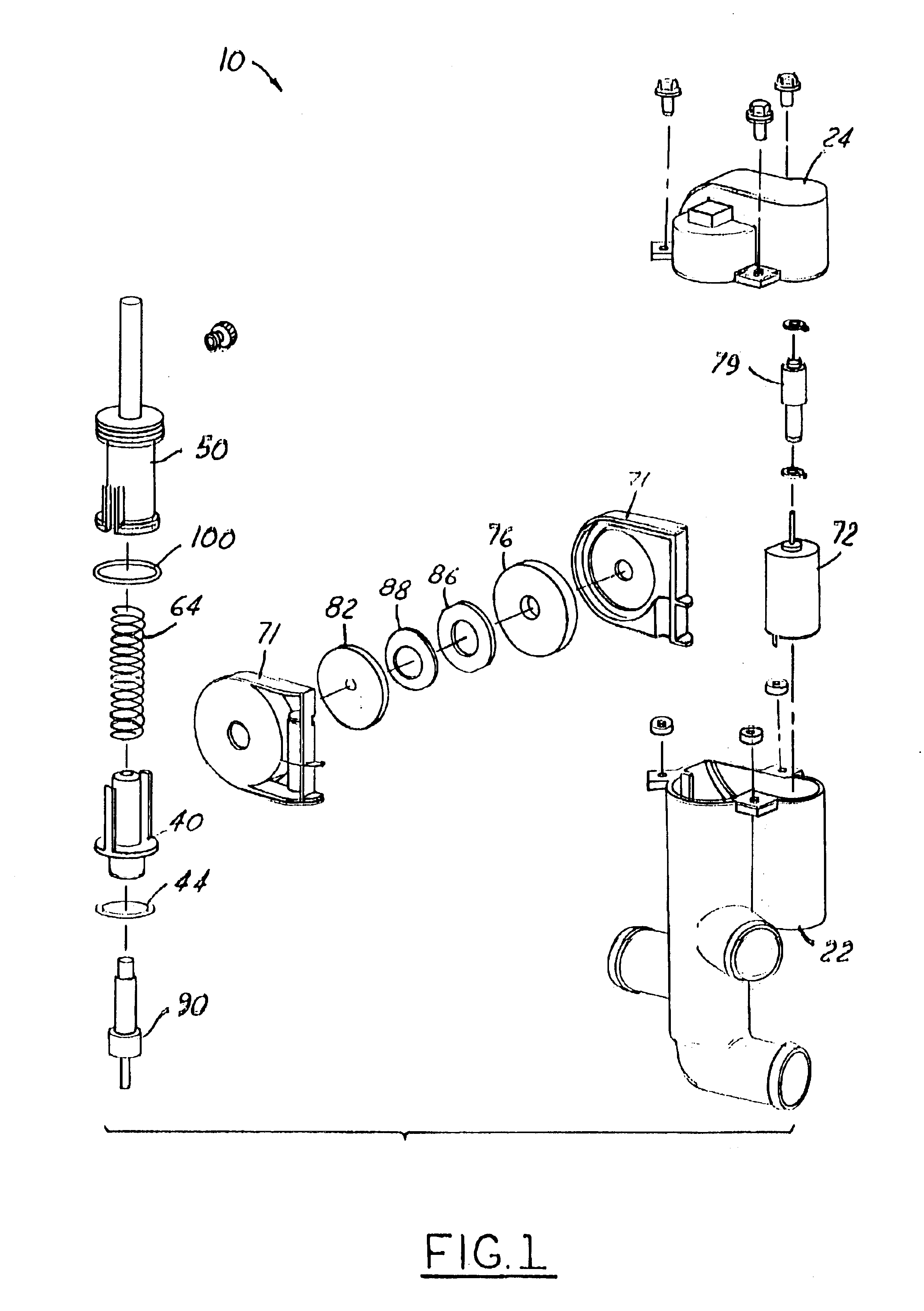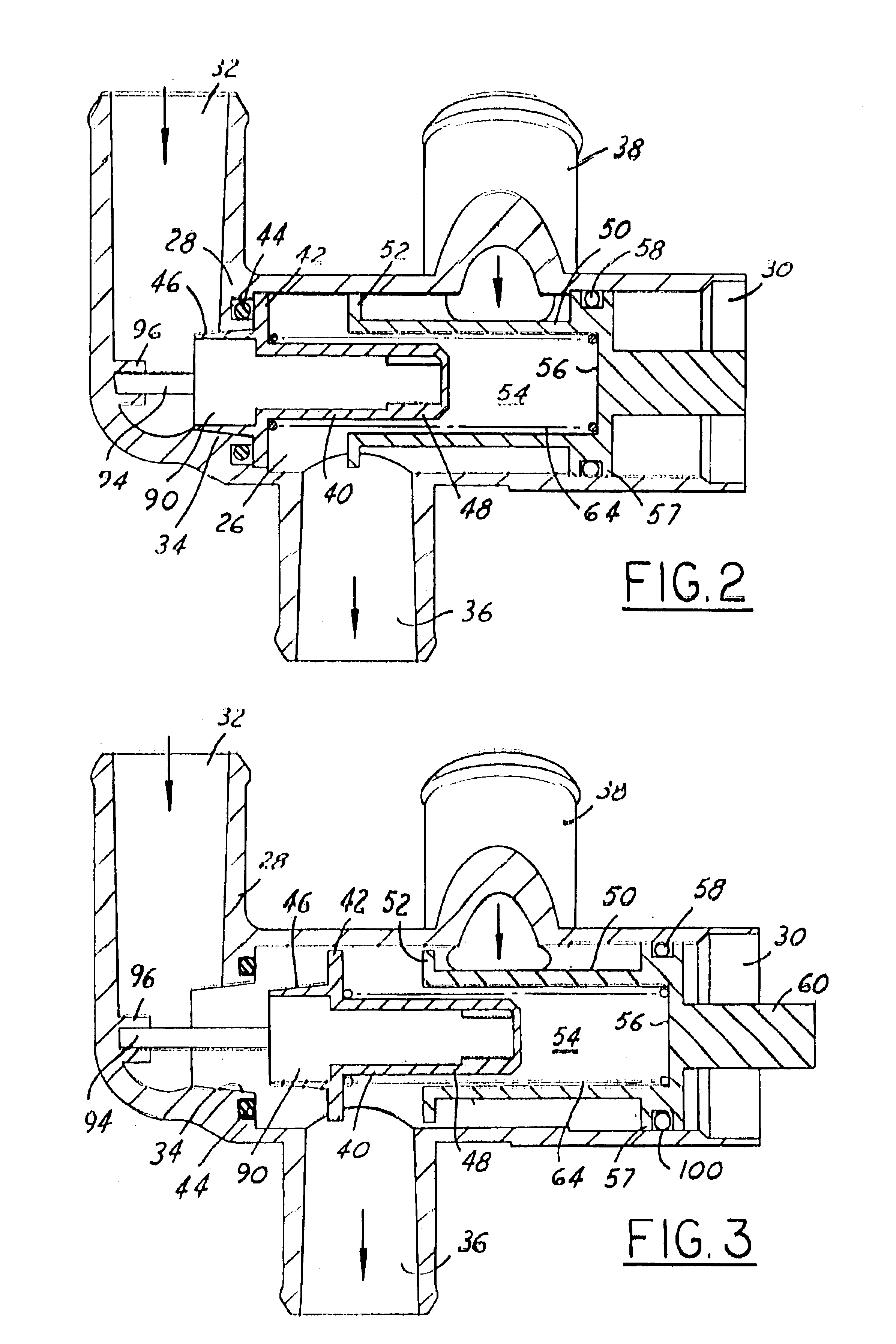Linear proportional valve
- Summary
- Abstract
- Description
- Claims
- Application Information
AI Technical Summary
Benefits of technology
Problems solved by technology
Method used
Image
Examples
Embodiment Construction
[0019]Referring to the Figures, FIGS. 1-6 discloses a valve assembly 10 for controlling the flow of coolant fluid between an engine of an automotive vehicle and a radiator. The valve assembly 10 includes a housing 20 having lower 22 and upper 24 halves for operatively supporting the components of the valve assembly 10. A generally cylindrical chamber 26 is formed between the lower 22 and upper 24 halves and extends between a first end wall 28 in the lower half 22 and a second end wall 30 in the upper half 24. A tubular-shaped inlet or radiator port 32 extends generally outwardly from the first end wall 28 of the chamber 26 for passing fluid flow from the radiator to the chamber 26. A bore 34 is formed in the first end wall 28 for allowing fluid flow between the radiator port 32 and the chamber 26. A tubular-shaped outlet or engine port 36 extends generally outwardly from between the first 28 and second 30 end walls of the chamber 26 for passing fluid flow from the chamber 26 to the ...
PUM
 Login to View More
Login to View More Abstract
Description
Claims
Application Information
 Login to View More
Login to View More - R&D
- Intellectual Property
- Life Sciences
- Materials
- Tech Scout
- Unparalleled Data Quality
- Higher Quality Content
- 60% Fewer Hallucinations
Browse by: Latest US Patents, China's latest patents, Technical Efficacy Thesaurus, Application Domain, Technology Topic, Popular Technical Reports.
© 2025 PatSnap. All rights reserved.Legal|Privacy policy|Modern Slavery Act Transparency Statement|Sitemap|About US| Contact US: help@patsnap.com



